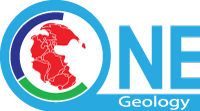7.1 Introduction to GeoSciML-Portrayal
GeoSciML-Portrayal is an XML markup language for encoding geoscience information. It was developed to provide a simple schema to deliver geologic map unit, contact, and shear displacement structure (fault and ductile shear zone) descriptions in web map services. The intention is to support interoperable map services, for which interoperability is based on a shared data schema and the use of standard vocabulary terms for basic type classification of contacts and faults, age of geologic units and faults, and lithology of geologic units. Use of standard vocabulary enables map display using a shared legend (symbolization scheme) to achieve visual harmonization of maps provided by different services. In addition the GeoSciML-Portrayal data structure includes text fields with information for human users browsing a geologic map, a link to a full GeoSciML feature element if available, and a symbol identifier field to enable a user-defined symbolization scheme in each map service. By linking the simple feature WMS with a GeoSciML WFS, clients can acquire geologic feature descriptions that can be used in web-mapping applications to construct custom legends. Linking to full GeoSciML features allows the portrayal schema to be used in a map browsing and query interface to identify and select features for further processing that can be acquired as highly structured, information-rich GML features.
As of version 4.0, the GeoSciML-Portrayal schema is part of GeoSciML 4.0. GeoSciML is an XML markup language developed as a GML v3.2 application for encoding a wide variety of geoscientific information (See Richard et al., 2007), and defines a collection of GML features for describing various geoscience entities. The GeoSciML-Portrayal schema is a simplified view of GeoSciML data that merges complex property values into single, human-readable text, and assigns single, representative identifiers from controlled vocabularies for lithology and age that can be used for standardized map legends.
GeoSciML-Portrayal conforms to the level 0 of the Simple Features Profile for GML (OGC 10-100r3 - van den Brink et al., 2011; OGC 06-049). The simple features profile supports only a limited subset of possible GML geometry types that may be used to describe feature geographic location and shape. For the purposes of GeoSciML simple features, these include gml:Point, gml:LineString, gml:Curve, gml:Polygon, gml:Surface, gml:MultiPoint, gml:MultiCurve, gml:MultiSurface and multi-geometry types consisting of collections of these base types. For a useful discussion of GML simple vs. complex features, see this GeoServer documentation page.
GeoSciML-Portrayal features are analogous to GeoSciML mapped features, with additional text attributes for human consumption, a flatted-relation view of the age, and assignment to a single lithology. The portrayal schema consists of ‘free-text’ fields and identifier fields. In robust services the free-text fields will contain well-structured summaries of data in a format suitable for reading by the intended users. Identifier fields should contain identifiers for concepts in a controlled vocabulary (for example CGI Simple Lithology) that specify representative thematic properties. Inclusion of these standardized identifiers enables interoperability across services. Ideally these should be URIs that can be dereferenced to obtain machine-processable or human-readable representations of the identified concepts.
In addition, each feature includes an (optional) identifier for a specification, which is a resource containing a description of that particular feature. In many cases, the descriptions will be the same for all polygons assigned to the same map unit or classified as the same kind of contact or structure. If more complete information is available, different descriptions may be associated with subsets of features of the same type that are portrayed with the same symbol. In the most extreme case, each feature might have a unique description that captures the full spatial variability of a geologic unit or structure. Following the standard patterns of web architecture, the specification_uri should be dereferenceable to obtain one or more representations of that description. For maximum interoperability, one of these representations should be a GeoSciML encoded description of the feature, but other encodings might also be available, for example HTML web pages, other XML schema, or JSON. For those familiar with full GeoSciML, the specification_uri property is equivalent to the specification association from MappedFeature to GeologicFeature.
Deployment of an interoperable dataset requires first that the interchange format used for interoperability is well understood. The following sections are intended to provide the necessary background understanding of GeoSciML-Portrayal, and should be studied carefully. The deployment process consists of determining how the information in the dataset to be published can best be represented using the elements in the GeoSciML-Portrayal model, populating the feature collections that will be served, and configuring a WMS server to display the data.
Section last modified: 10 December 2015
